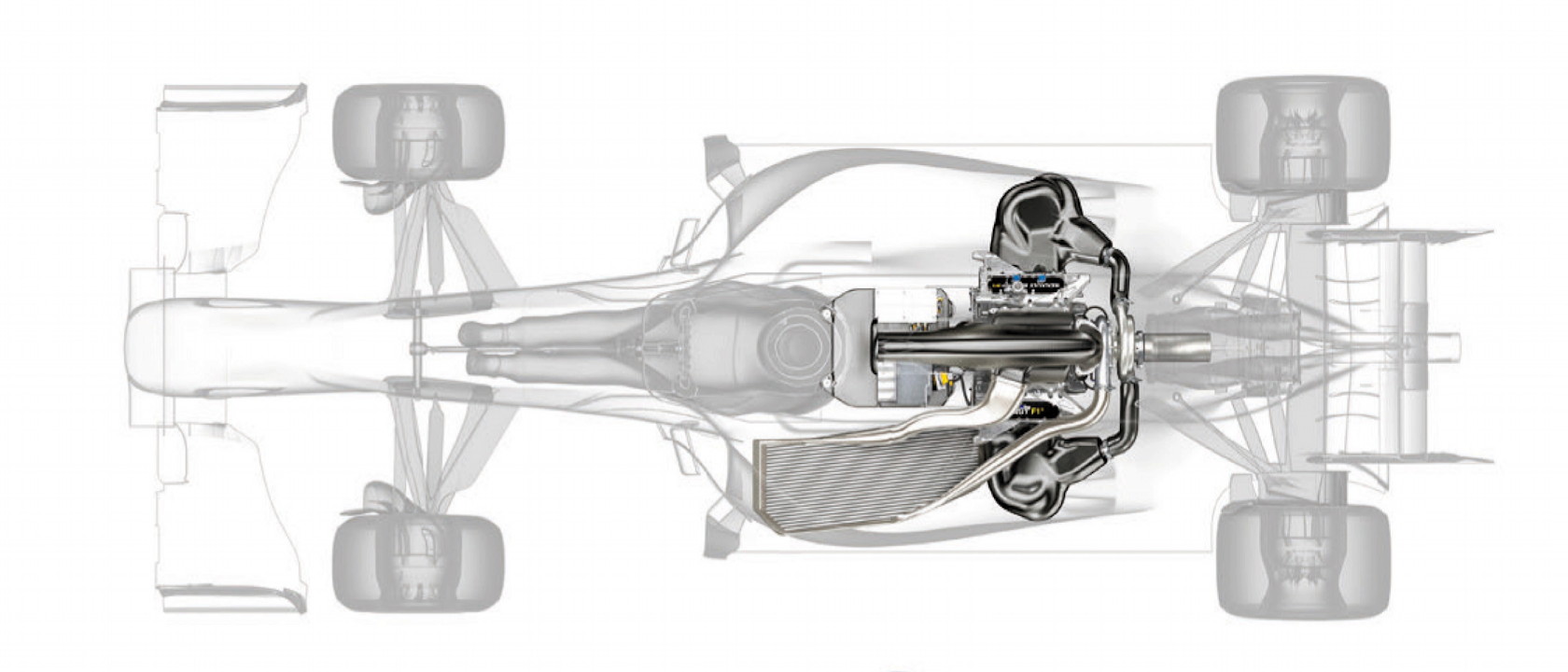The new technical regulations established for the 2014 F1 season feature the introduction of advanced hybrid power units — they’re not just “engines” anymore — consisting of a 1.6-liter V6 turbo engine and two Energy Recovery Systems (ERS). The 2.4-liter normally-aspirated V8 engines of 2013 produced around 750bhp, with an additional 80bhp available for around six seconds per lap from KERS. The 2014 V6s put out around 600 bhp. However, the two ERS systems (ERS-K and ERS-H) will give drivers an additional 160 bhp or so for approximately 33 seconds per lap.
More spectacular racing, with F1 cars having more power than grip on corner exits and an opportunity to showcase technology and innovation, putting F1 back at the cutting edge — these are the likely hallmarks of Formula 1 as it will be under the new regime in 2014, according to experts who are building the new engines.
With the new generation hybrid devices, the power unit will produce far more torque than the current V8s and this will lead to the cars stepping out more at the rear as they exit corners. Getting on top of that will be important, but so will the efficiency of the power units themselves. The pressure will be on Pirelli, if it retains its F1 tire supply contract, to produce tires that can cope with the increase in sliding.
A glimpse into how F1 will change in 2014 | James Allen On F1
Unlike in 2013, the driver no longer has to push a button to active ERS — the power is simply delivered to the rear wheels via the throttle pedal (with a little help from the car’s electronics). Therefore, while a car could still lap relatively competitively without KERS in 2013, an ERS problem in 2014 will be much more debilitating to performance.
Harvesting this much energy under braking will affect braking efficiency at the rear wheels, so electronic rear brake control systems will be allowed. Electronic braking control will be used to offset the ERS-K effect by aiding the braking effort at the rear, negating the need for the driver to constantly alter the brake bias. Bodywork is also banned in the area behind the car’s tailpipe axis, preventing vanes or winglets from diverting the plume towards the rear wing or diffuser, in an effort to arrest “blown diffusers.” There will be a single exhaust, exiting down the center of the engine cover, onto the rear wing. This will make exhaust blowing onto the diffuser a huge challenge, but as the potential downforce gains are so great it will be fascinating to see how the aerodynamicists manage to channel the airflow — as they always do!


